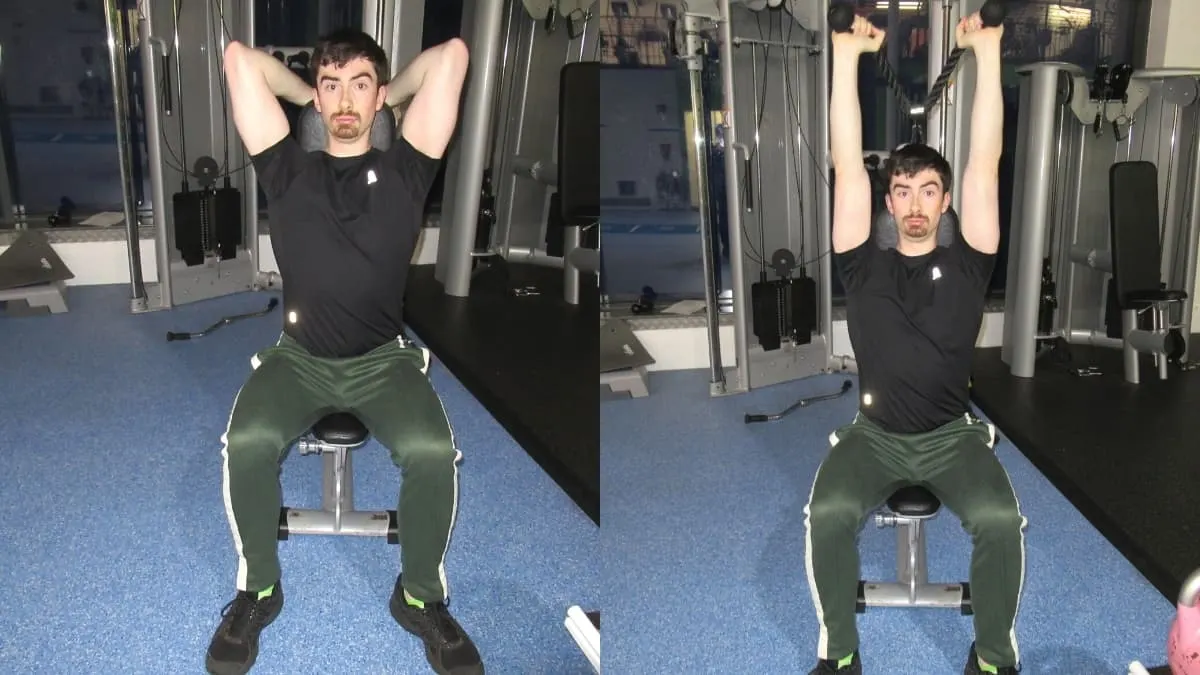The seated overhead cable tricep extension is a great, hypertrophy-focused exercise. Unlike the standing version, the seated overhead cable extension doesn’t require you to contract your abs as hard in order to keep your torso straight because your upper body is already stabilized back the backrest of the weight bench.
This reduced core stability requirement means that you can focus purely on working your triceps, which is the primary aim of any tricep extension.
The following guide shows you how to do 4 different seated cable tricep extension variations and discusses the pros and cons of each seated tricep extension exercise.
Seated overhead cable extension exercise details
- Also Known As: Sitting overhead cable extension
- Main Muscles: Triceps brachii
- Exercise Type: Strength
- Exercise Mechanics: Isolation
- Difficulty Level: Beginner
- Equipment Needed: Cable station, rope attachment
How to do a seated cable tricep extension
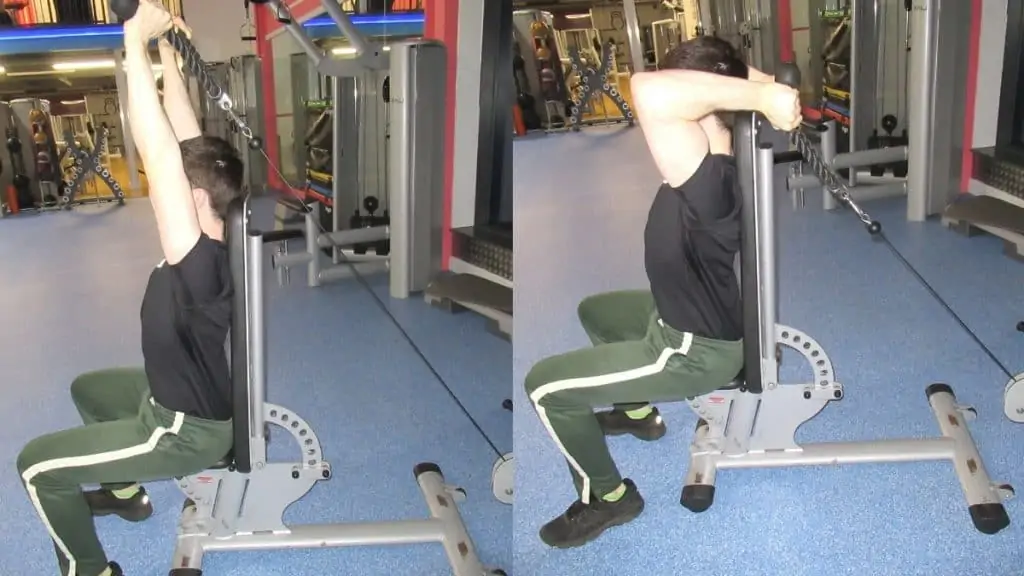
- Wheel a bench over to a cable station so that the back pad is facing the pulley.
- Set the back pad of the weight bench to a 90-degree angle. You can also use a bench that has a fixed backrest.
- Connect a rope attachment to the low pulley.
- Grab the rope and then, in one swift movement, drag the rope behind your head and sit on the seat.
- Tuck your elbows in and make sure that they’re roughly parallel with the ground.
- Flex your triceps to lift the rope. Keep going until your elbows reach full extension.
- “Split” the rope at the top of the rep to intensify the contraction.
- Lower the rope behind your head under control. Keep going until you feel an intense triceps stretch.
- Perform another rep by contracting your triceps forcefully in order to lift the rope.
- Do 3-5 sets of 8-15 reps in total.
Seated cable triceps extension variations
Just like there are multiple ways to perform an incline cable triceps extension, there are also different ways to do cable tricep extensions sitting down. Learn the benefits and drawbacks of each variation by checking out the exercise demos below.
V-bar seated cable extension
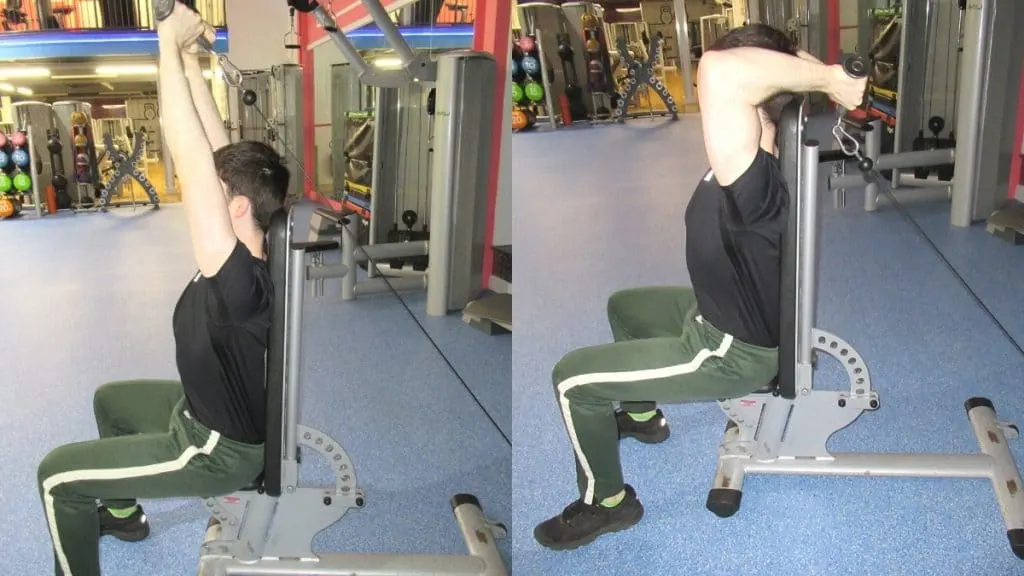
Seated overhead v bar extensions require less stabilization (from your triceps and shoulders) than the seated rope cable extension because a v-bar is one solid attachment, whereas a rope is split into two distinct sections.
For this reason, you can lift a bit heavier on v-bar extensions. The trade-off is that you can’t “split” the bar at the end of the rep (in order to intensify the peak contraction) like you can with a rope.
Sitting v bar extensions also force your wrists into a predetermined position, which, although neutral in terms of grip, is a fixed position nonetheless and one which might not be comfortable for everyone.
Using a rope, on the other hand, gives your wrists and hands greater freedom of movement, which, besides promoting a more potent peak contraction, helps you to keep the pressure on your joints to a minimum.
Seated tricep cable extensions with a bar
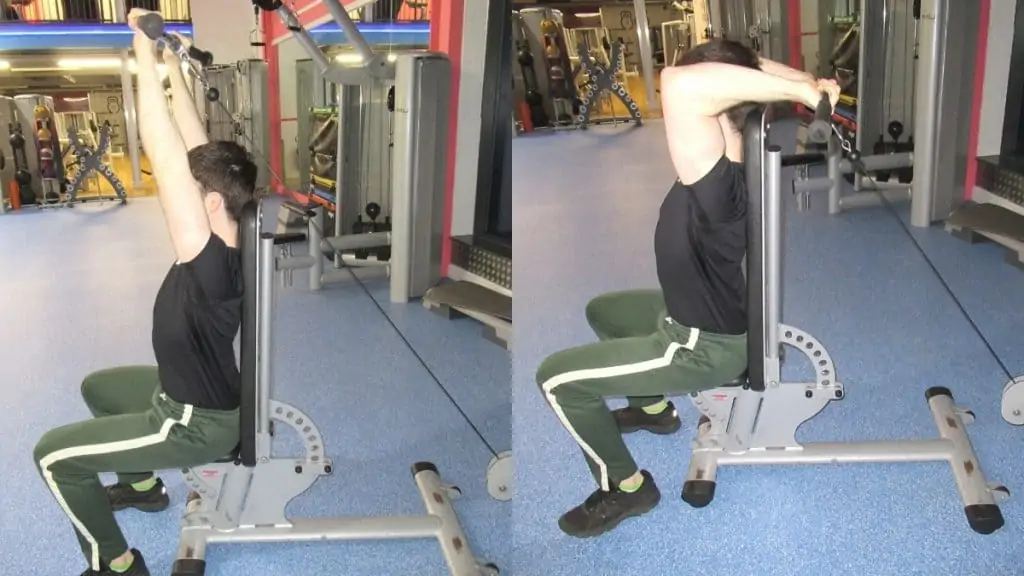
Performing seated cable tricep extensions with a bar enables you to lift plenty of weight. But unless the bar has curved, semi-pronated grips, then your wrists might feel strained when you test your strength and lift heavy.
Using an EZ bar, as I alluded to, can combat the wrist strain problem because these bars have semi-pronated grips, which are naturally more comfortable to hold than the nonexistent grips on a straight bar attachment.
Additionally, using any kind of pronated grip (as opposed to a neutral grip) on overhead seated cable extensions usually means that your elbows will flare out more. While some elbow flare is okay, excessive amounts of elbow flare can hurt your joints.
Therefore, it’s recommended to use a rope attachment wherever possible so that you can keep both your shoulders and wrists in a neutral position.
Reverse grip seated cable extension
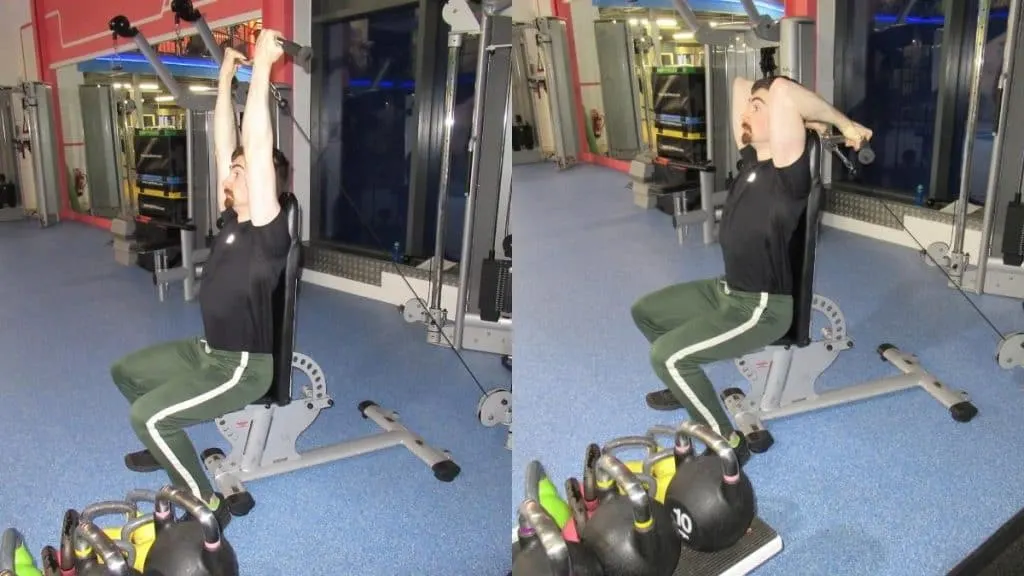
As with the seated barbell overhead tricep extension, you can do the seated cable triceps extension with a reverse grip, which is to say, with a supinated grip.
The advantage of using such a grip for the seated two arm cable tricep extension is that it often encourages lifters to keep their elbows tucked in, which in turn eases the pressure that gets put on their joints.
That’s all fine and dandy. But using a reverse grip doesn’t actually guarantee that your elbows will stay tucked because the triceps muscles don’t act on the wrist. In other words, it’s entirely possible to switch grips without moving your elbows an inch.
Additionally, using a reverse grip means that you can’t push into the bar with the palms of your hands, which in turn limits the amount of resistance you can lift and thereby the overload that you can place on your triceps.
As such, if you have access to a rope, then I recommend sticking with that attachment.
The verdict on seated overhead cable triceps extensions
The seated overhead tricep extension is both highly effective and very versatile. In addition to the 4 variations shown in this article, you can also do a seated one arm overhead cable tricep extension if you want to make your triceps as symmetrical as possible.
Performing any kind of seated one arm extension takes longer because, when you train unilaterally, you have to do double the number of sets. But this extra gym time is likely worth the symmetry gains if you’re an advanced lifter because you’ll be able to enhance the aesthetics of your physique even if you’re closing in on your triceps genetic potential.
Of course, you can get similar results by doing the seated cable tricep extension with a rope because you have to lock out each side of the rope independently, which in turn promotes proportional upper arm development.

